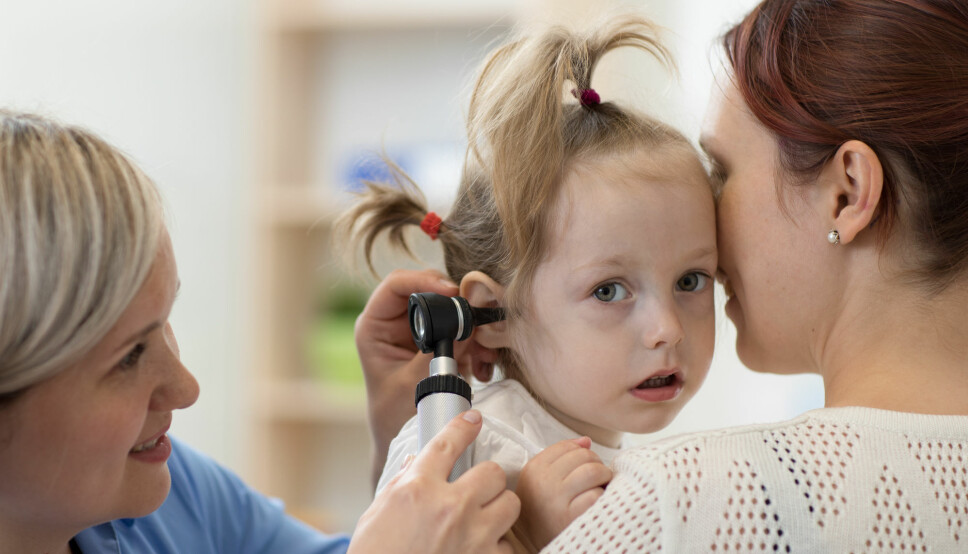
Fewer ear infections at Norwegian emergency rooms after vaccine
Many fewer small children are coming to Norwegian emergency rooms with painful ear infections after the pneumococcal vaccine became common.
Ear infections can be very painful. Crying children pulling on their ears have been a common sight in Norwegian emergency rooms.
But their numbers have dropped precipitously in recent years.
Emergency room visits by children under five with ear infections have been halved in the last eight years, according to a new study.
While Norwegian emergency services had 44 consultations on ear infections per 1,000 residents in 2010, they had only 21 out of 1,000 in 2018.
The study includes all electronic billing by Norwegian emergency service doctors over that period.
More than 90 percent vaccinated
At the same time, more and more children have been vaccinated against the pneumococcus bacterium.
This bacterium is a common cause of ear infections, although many cases are caused by viruses. The treatment is often antibiotics.
The vaccine became part of Norway’s vaccination programme in 2006 and is given when children are three, five and twelve months old. Now, 91–95 per cent of all children in Norway aged 0–5 years have been vaccinated.
Hogne Sandvik, who conducted the study, can’t say for certain that the vaccine has led to fewer ear infection visits to the emergency room, but believes this is a reasonable explanation. Sandvik is a research professor at the National Centre for Emergency Primary Health Care.
The same trend was observed in the United States, after the vaccine entered widespread use in 2010, according to a US study published in the journal JAMA Pediatrics.
Fewer visits to emergency services for other illnesses
Norwegian toddlers are coming to the emergency room less often than before for other problems, too.
Visits between 2006 and 2016 dropped by 26 per cent.
But the drop in visits linked to ear infections was twice as large. And it happened abruptly around 2011, when more than 90 percent of 0-5 year olds had been vaccinated, five years after the vaccine was introduced.
The decline continued thereafter, because young children were protected by herd immunity when older children were also immune, Sandvik suggests.
Possible explanations other than the vaccine
The figures from the emergency room do not say how many children in Norway actually had an ear infection during the period in question.
Some children may be treated by their GP, for example.
Parents may wait longer to seek help or choose a private physician instead.
The data show no increase in GP visits, but it is possible that parents are still going more often to their GP when their child has an ear infection than to the emergency room.
Data from GP visits show that ear infections as a diagnosis have steadily dropped since the mid-1990s, long before the vaccine was introduced.
This may suggest that there is more at play than just the vaccine in decreasing the numbers of ear infections.
Exposure to secondhand tobacco smoke can cause ear infections. A 2011 US study published in BMJ Tobacco Control shows that the numbers of children exposed to secondhand smoke and the number of cases of ear infections both dropped from 1993 to 2006.
The MMR vaccine also protects against ear infections, according to a 2014 Danish study.
Translated by: Nancy Bazilchuk
Reference:
Hogne Sandvik: Children with otitis attending emergency primary health care units following introduction of pneumococcal vaccine.Tidsskrift for Den norske legeforening, (Journal of the Norwegian Medical Association), 24 March 2020. Doi: 10.4045 / journal 19.0727.
———































